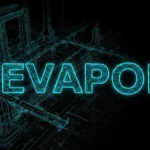When we think of the internet, most people picture a space filled with opportunities—whether it’s for work, connection, entertainment, or learning. But the online world is vast and layered, with darker corners that often operate outside the boundaries of ethics and law. One such name that repeatedly comes up in online conversations is anonibs. At first glance, the term might seem like just another website, but the reality is much more complex and controversial.
Anonibs, sometimes referred to as “Anon IB” or “Anonymous Image Board,” was an online platform that hosted and shared explicit images, often in ways that sparked major debates about privacy, consent, and the misuse of technology. While some saw it as just another forum for adult content, others viewed it as a harmful hub that enabled harassment and exploitation. To truly understand what anonibs was and why it remains a talking point even today, we need to dive into its background, how it operated, and the consequences it created for both individuals and society at large.
What Was Anonibs?
Anonibs functioned as an image board website—essentially an online database where users could upload and share explicit pictures. The name itself reveals much about its purpose: “Anon” referred to anonymity, and “IB” meant image board. Unlike traditional social media platforms that require user accounts, verification, or at least some level of accountability, anonibs thrived on the promise of complete anonymity. Anyone could post, and anyone could view, without leaving behind a trace of identity.
This sense of invisibility gave people a level of boldness they might not otherwise display online. Unfortunately, this freedom also opened the door to unethical behavior. Instead of simply being a place for consenting adults to share content, anonibs often became a space where personal and private images—sometimes stolen or leaked—were circulated without the subject’s knowledge or permission. This practice quickly tied the platform’s name to issues like revenge porn, doxxing, and privacy violations.
Why Did It Gain Attention?
The internet has no shortage of adult websites, so why did anonibs gain such notoriety? The answer lies in the way it operated and the kind of material that was shared. While mainstream adult platforms usually rely on professionally produced content with clear agreements between performers and publishers, anonibs leaned heavily on user-generated content.
Many of the images uploaded to anonibs were not taken with the intent of ever being public. In fact, a large portion of the site’s activity revolved around “threads” or discussions about specific schools, workplaces, or even entire regions, where users requested or shared private photos of individuals they knew personally. This localized focus made the site particularly invasive, as it blurred the line between online fantasy and real-life identities.
This structure meant that anonibs often encouraged behavior that crossed legal and ethical boundaries. From stolen social media pictures to hacked personal accounts, the platform became a magnet for controversy, leading to growing media coverage, legal scrutiny, and public outrage.
The Ethical Dilemma
At the heart of the anonibs debate lies a deep ethical question: where should we draw the line between free speech, anonymity, and personal privacy? Advocates of anonymity often argue that the ability to share without fear of judgment is essential for free expression on the internet. However, when that anonymity is used to harm others—by distributing non-consensual explicit material, for example—it becomes difficult to defend.
For many victims, anonibs represented more than just an online site. It was a place where their personal lives were exposed without consent, often leading to humiliation, damaged reputations, and even emotional trauma. In some cases, people faced harassment not just online but also in real life after their images were circulated.
The broader ethical conversation sparked by anonibs continues to this day. It raises the issue of how online platforms should be held accountable for the content they host and whether anonymity should be protected at all costs when it facilitates harmful behavior.
Legal Battles and Crackdowns
Unsurprisingly, anonibs eventually caught the attention of law enforcement and legal authorities. Many countries have strict laws regarding the distribution of non-consensual pornography, sometimes referred to as “revenge porn.” As reports of harassment and leaked private images linked to anonibs grew, so did the calls for authorities to intervene.
Some victims pursued lawsuits, while others turned to advocacy groups that specialize in fighting online exploitation. Over time, anonibs faced increasing pressure and was eventually taken down. However, like many controversial websites, its legacy lingered. Mirrors, clones, and spin-off sites appeared, attempting to capture the same audience. But the original anonibs name became symbolic—a cautionary tale about how anonymity, if misused, can create serious harm.
The Role of Technology in Enabling Platforms Like Anonibs
The existence of anonibs wasn’t an accident. It was made possible by the way digital technology enables the easy creation, duplication, and distribution of images. Smartphones with high-resolution cameras, cloud storage services, and social media all contributed to an environment where private content could easily escape personal control.
The issue wasn’t just about people willingly sharing their private photos with trusted partners or storing them online. Hacks, leaks, and even simple mistakes could turn those private files into content for exploitation. Anonibs simply provided a central hub for these materials to circulate. This raises important questions about digital literacy and personal security in the modern era. How can individuals protect their private information in a world where one wrong click could lead to a lifetime of consequences?
Cultural Impact of Anonibs
Beyond the legal and technological aspects, anonibs also left a cultural mark. It became part of a broader conversation about the risks of online sharing, especially for younger generations who grew up in the age of social media. Schools, universities, and workplaces began to stress the importance of digital safety, warning students and employees that private images could end up in places they never intended.
Anonibs also highlighted how online anonymity can amplify harmful behavior. The so-called “keyboard warrior” effect—where people act more aggressively online because they don’t fear consequences—was magnified in spaces like anonibs. This forced society to reconsider the balance between protecting anonymity for positive reasons (like political activism) and limiting it when it enables harassment.
The Aftermath: Lessons Learned
Although anonibs no longer operates in the same way it once did, the issues it brought to light are far from resolved. New platforms emerge all the time, and while some learn from past controversies and implement stronger protections, others repeat the same mistakes. For individuals, the key lesson is to be cautious about what they share online and to understand that digital footprints are not easily erased.
On a larger scale, anonibs shows why regulation and oversight are necessary in the digital age. Without rules and accountability, the internet can quickly become a place where exploitation flourishes. Yet, regulation must also balance with freedom of expression, making it one of the most complicated challenges of our time.
Final Thoughts
Anonibs was more than just an online database of explicit images—it became a symbol of the darker side of internet anonymity. While it promised freedom from accountability, that same freedom was used to violate privacy and cause harm to countless individuals. The platform may no longer hold the prominence it once did, but its name continues to spark debates about online ethics, personal privacy, and the future of digital responsibility.
As technology advances, the core questions raised by anonibs remain relevant. How much privacy do we truly have in the digital world? Should anonymity always be protected, even when it enables harmful behavior? And what steps can society take to ensure that freedom online doesn’t come at the expense of personal safety? These are the conversations that need to continue, long after anonibs has faded from the spotlight.



